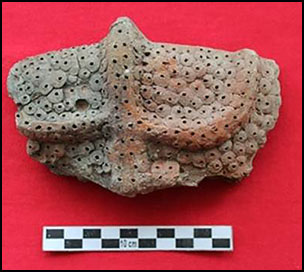Article contents
Early Metal Age interactions in Island Southeast Asia and Oceania: jar burials from Aru Manara, northern Moluccas
Published online by Cambridge University Press: 22 August 2018
Abstract

New evidence from the rockshelter site of Aru Manara, on the island of Morotai, in the northern Moluccas, East Indonesia, suggests an earlier than previously assumed date for extensive interactions between this area of Southeast Asia and the wider Pacific. Shared mortuary customs and associated ceramic grave goods, along with other practices such as megalithic traditions, appear to start in the Late Neolithic, but become more widespread and consolidated in the Early Metal Age. Excavations at Aru Manara show that the northern Moluccas may have figured prominently in the newly established network of interaction evidenced at this time, making it an important location in the spread and dispersal of people and culture throughout Island Southeast Asia and into Oceania.
- Type
- Research
- Information
- Copyright
- © Antiquity Publications Ltd, 2018
References
- 7
- Cited by




